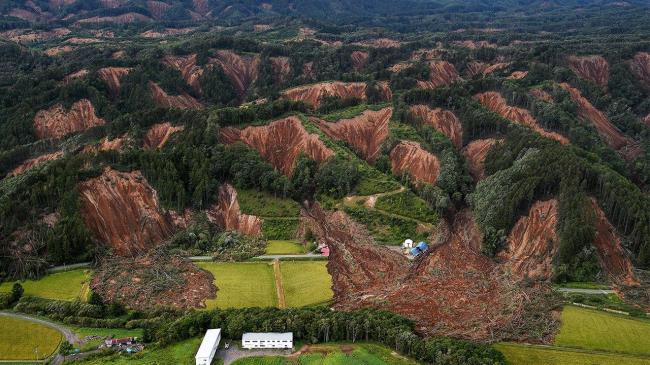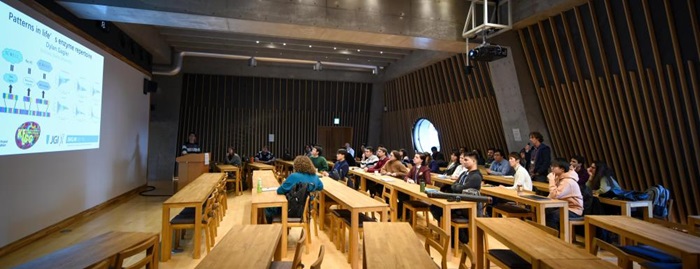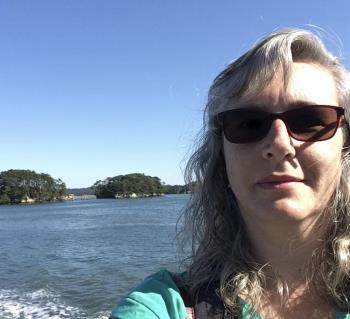Preparing and responding to natural disasters demonstrates the tools we need to respond to crisis and conflict in our society and professional institutions.

Landslides in the town of Atsuma killed dozens after last week’s earthquake on Japan’s Hokkaido island. Credit: THE ASAHI SHIMBUN/GETTY IMAGES/SCIENCE.
When a major earthquake happens elsewhere in the world, I think about the weaknesses in my emergency supplies and plans at home and work. Every earthquake (or any natural disaster) is different and often occurs in tandem with other unanticipated factors, such that there is always something to learn from the preparation and response of others. Likewise, witnessing social unrest unfold elsewhere provides a chance to examine the situation where we live and work for our own preparedness and to check for areas of improvement.
Essential elements from disaster preparation that we can apply to crisis preparation.
- Collect the data: You can’t measure the size of an earthquake without seismometers, or the wind speed of an approaching typhoon without satellites. You also cannot see if there are inequities in an institution if there is no data on the membership and their experience within the institution.
- Plan for the worst: You don’t base your disaster plan on a modest earthquake or a slight flood. You plan for the worst case scenario. In Tokyo this is a giant earthquake with a tsunami, loss of electricity and water, fire, and all this could be followed by volcanic activity. When considering institutional weakness, imagine rare, but possible scenarios such as seeking funding in the middle of a global pandemic and economic recession.
- Communication is key: A disaster plan won’t work if it is based on functioning WiFi and cellular service. Since real-time communication may not be reliable, the public must be informed about the nature of the disaster, how to plan for their household, how to evacuate if necessary, what (if any) assistance the government may be able to provide. This information must be distributed and drilled ahead of time. Institutions also need multiple lines of communication and clear expectations of how the leadership and the members/visitors should respond to a crisis, such as a harassment claim.
- Regular self-evaluation: Disaster preparedness plans are continuously updated as situations change and new information is gathered. Currently, disaster evacuation center plans are being adjusted to minimize exposure to the novel coronavirus. Likewise, it is time for institutions to evaluate their diversity goals, how to accomplish them, and improvements to the system if the desired goals are not being met.

Like the ELSI building, the ELSI community is built for resilience in the face of forces that are beyond their control. Credit: ELSI.
At ELSI we work toward diversity and fairness in recruitment and retention of ELSI members. We developed our own Code of Conduct to openly state our dedication to maintaining a supportive research environment. We initiated a task force to consult and advise ELSI members and leadership regarding issues that arise in a highly interdisciplinary and multi-cultural research program. The Global Environment Team (GET) is an active entity designed to thoughtfully respond to concerns, such as perceived racism, when they occur.
Given that many people are examining their own actions and those of their institutions, I wanted to share beneficial steps ELSI has taken to support its diversity goals over the past 7 years:
- Code of Conduct: Signed by all members and visitors.
- All Hands strategy meeting in 2017: Professionally facilitated event to encourage members to interact and engage in different ways and forge new collaborations.
- Cultural sensitivity and anti-harassment training in 2018-2019.
- Initial GET formation and expansion beyond gender.
- Stated goals for gender balance at ELSI-funded workshops and symposia.
- Annual evaluation with emphasis on institutional cooperation, space to express individual goals and aspirations, and any impediments to achieving these.
- Individual meetings with ELSI management to express hopes and concerns.
- Development of unbiased review criteria for summer/winter school selection.
- Using best practices to remove bias in recruitment, candidate evaluation, and interviews.
- Meyasubako system for anonymous reporting of any form of harassment.
Like buildings, institutions are stronger and more resilient when built to withstand the maximum expected external and internal forces. While it is best to keep this in mind when construction begins, reinforcements can always be added later if weaknesses are discovered. However, some are not safe for their inhabitants and may need to be rebuilt altogether.
---

Christine Houser, ELSI.
Author bio : Christine Houser is chair of the Global Environment Team at the Earth-Life Science Institute, Tokyo Institute of Technology. Dr. Houser uses seismology to reveal properties of the Earth’s interior to constrain planet evolution models and is passionate about disaster preparedness.
